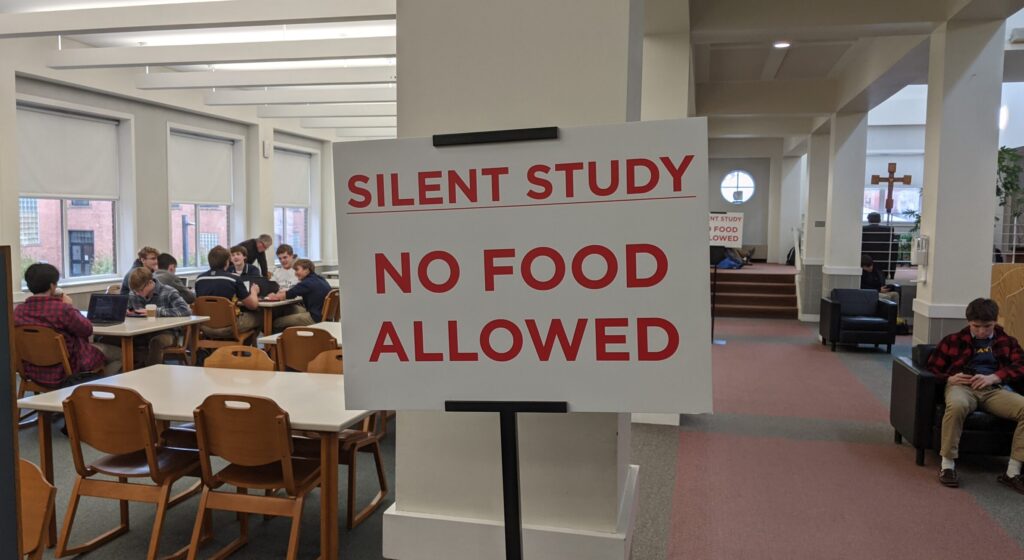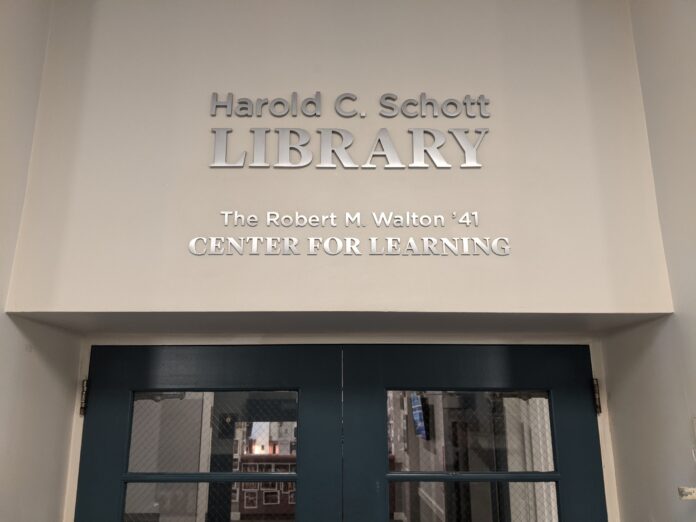by Kelly Coleman ’23
As I sit in the library writing this piece, I can’t help but notice the people around me. Directly to my left, seven students — all seniors, might I add — crowd around a table having an exuberant conversation about something or other; the words “fantasy” and “football” cut through the clamor. Similar conversations are ongoing around the room; though, at least these other groups occasionally remember to, in a sudden moment of awareness like deer startled at the sound of a snapping twig, lower their noise to a reasonable level before letting it gradually rise back up to a crescendo and letting the cycle repeat ad nauseam. Our table of seven doesn’t even seem interested in the work they somehow managed to relocate from their backpacks to the table in front of them nor in dampening their sound. They’re not even making an effort to stage-whisper.
This sight has become commonplace in the Harold C. Schott Library, the erstwhile quiet study space of Saint Ignatius High School. The library has become an overflow for Rade: a place for students who can’t be bothered to find somewhere else to loiter. As I continue watching, our little group of socialites seems to have found potential allies in a table across the way and have begun to send envoys back and forth to begin talks to initiate a conversation spanning the entire room. But it wasn’t always like this. I remember a time when the library met the expectations one had for a building that bears that name—a time when people came to the library for a quiet space. Some came to complete homework, some to relax, and others to catch up on reading. Whatever they came to this place to do, they had at least half a mind to do it quietly. It is hard to imagine anybody coming to the library for quiet reading now.

If one is lucky enough to visit the library during the early morning hours before school, they might find some semblance of what used to be. The students at this time of day seem interested in at least pretending to use the library for its intended purpose, yet I ascribe this more to lacking proper numbers than any purity of intentions. Abandon hope, all ye who enter during school hours, however; watch in despair as students march in, their advance unperturbed by the “Silent Study” signs, the war drum of their conversation rising to a dull roar as they shatter any hopes of quiet. Their assault on the senses — and on any hopes of doing any meaningful studying — is complete and seemingly inexhaustible before at last the sound of a bell marks their retreat. They depart, however, with an unspoken promise to renew their assault the next day, leaving the war-torn room in apprehensive stillness.
It seems that our original group has at last quieted down now, finally set on the work they had so dutifully ignored in front of them, but it is of no matter: some other group has taken up the conversation in their absence, their voices rising to fill the momentary void. It saddens me to see the library reduced to these ruins from the palace of learning it once was, now a playground for the daft and raucous, a cacophony of chaos and trifles, and I’ve no one to thank for that but the men of Saint Ignatius High School.






